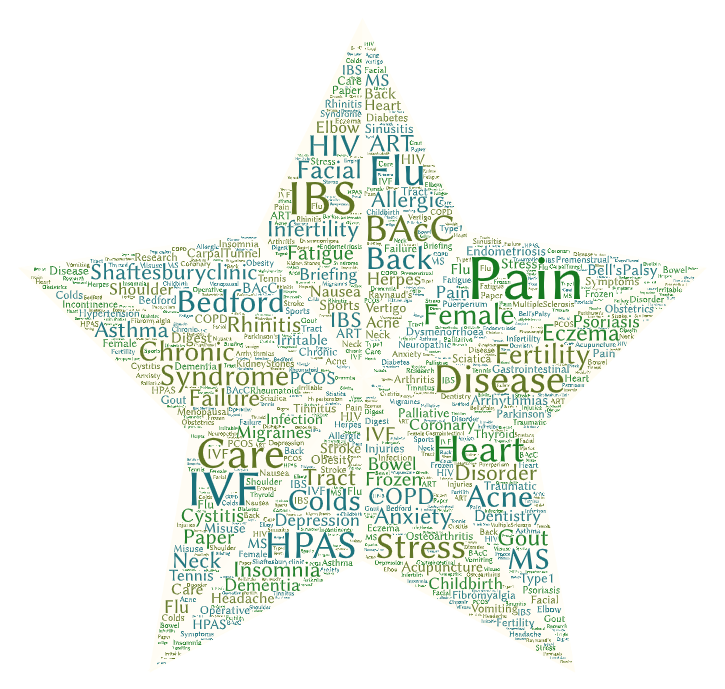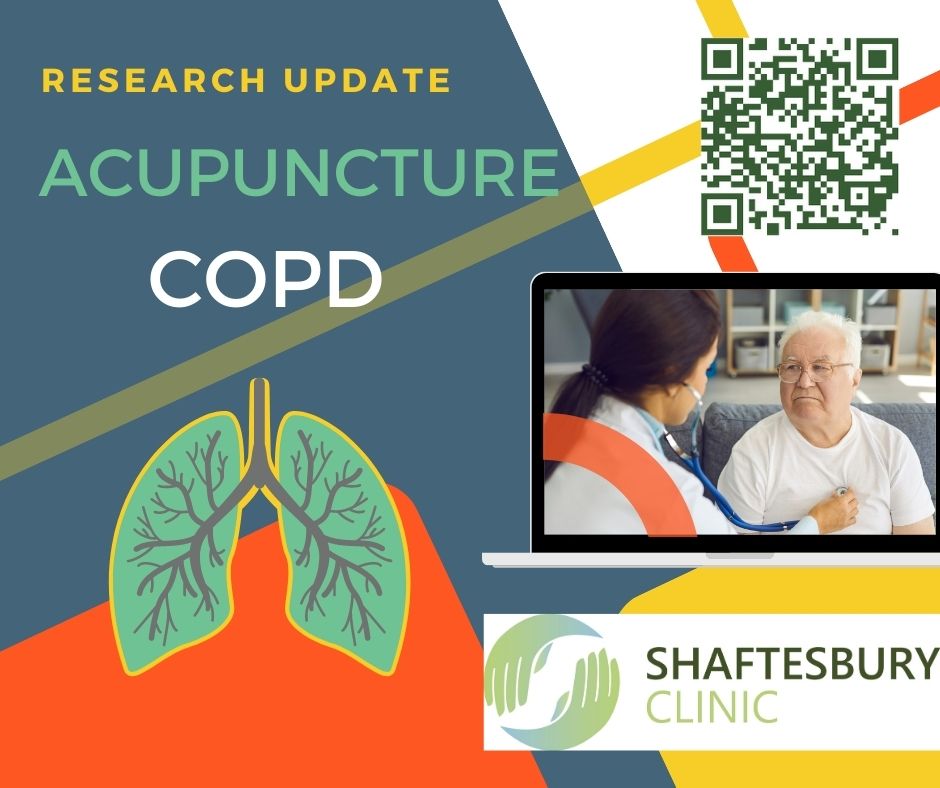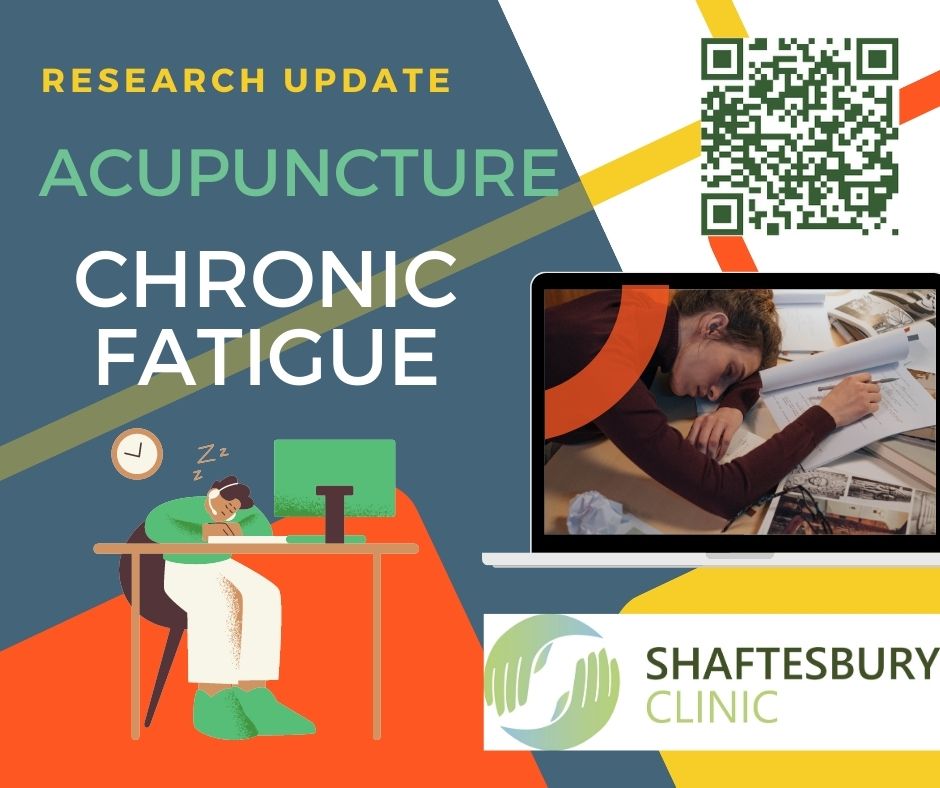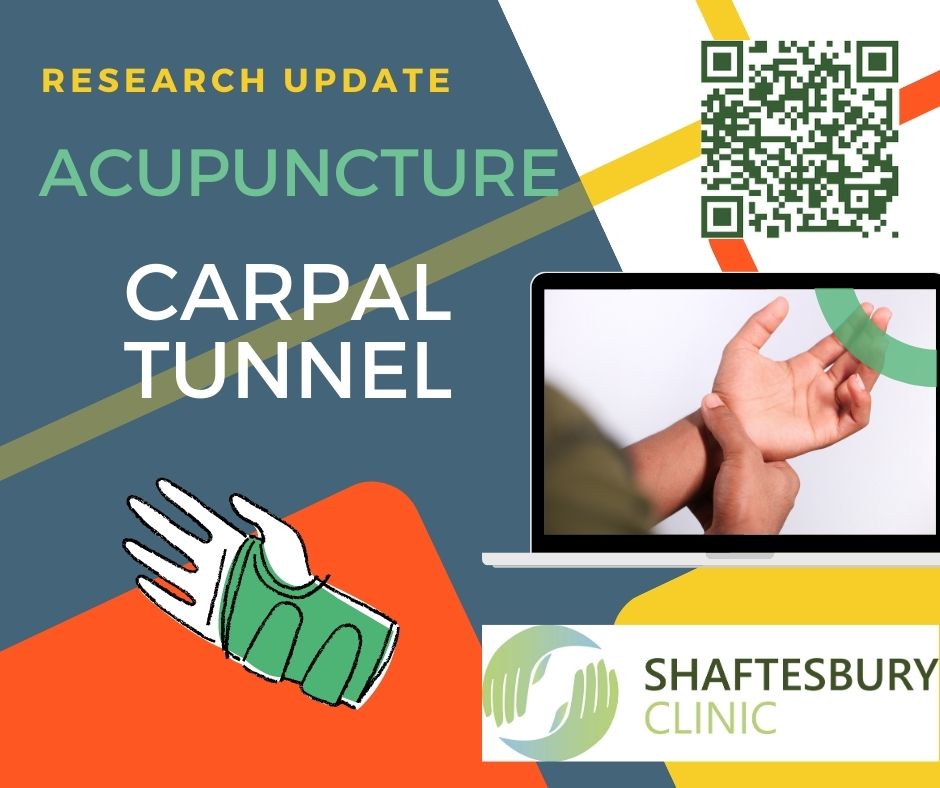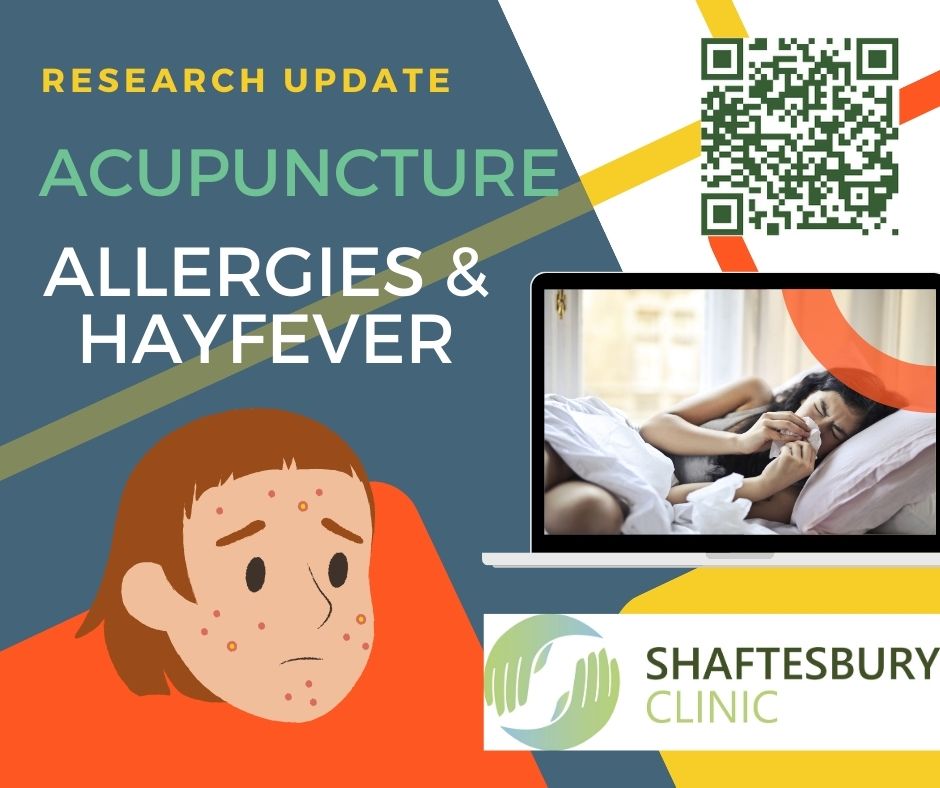You may also wish to look at our pages on Hypertension/High Blood Pressure ; Stroke ; Angina, Arrhythmias, Coronary Heart Disease, and Heart Failure
Important to know: Chronic health conditions should be addressed under direct medical supervision of your GP or consultant, and acupuncture would be an adjunct or complement to usual care – we advise that you let you doctor know when you use this approach.
About the research: It is worth noting that in research, randomised controlled studies (RCT) are the most reliable in terms of quality of evidence, with a systematic review or meta analysis of numerous studies being the best way of seeing the overall picture of the state of the evidence. Below we have a selection of the available research, which does include some larger RCTs, and reviews of the literature alongside smaller studies. The n= figure tells you how many people were participants in the study.
Interpreting the research:
When reading health research, it is important to know that Systematic Reviews or Meta Analyses of a large number of high-quality research studies are the very best way to be able to say to what extent a given treatment can address a condition, symptom, or set of symptoms. The next best level of evidence is the individual Randomised Controlled Study (RCT) which uses a systematic technique to compare two or more groups of patients receiving different treatments (or a treatment against a “control”, or no treatment). In acupuncture trials, the nature of the control group is of particular interest as it is hard to blind a patient to whether they are having a needle inserted or not, and even more challenging to blind the researcher/team to this.
The means and quality of how research is carried out varies considerably from country to country, and in terms of how an intervention is compared to another intervention (or a control). Of note is the fact that “sham” acupuncture (where needles are placed in apparently inert locations rather than traditional acupuncture points) is not really an inert process as it has physiological effects, so that comparing sham and “true acupuncture” may therefore not give a clear picture alone; but and form a part of a research body where acupuncture versus no treatment, vs conventional treatment or vs a different approach/modality also form part of the evidence base.
The n= figure (where quoted in research) tells you how many people were participants in the study, and usually the larger a study (when it is of good quality and design), the more likely it is to be reliable and applicable to larger populations. When (statistical) “significance” is discussed in view of studies it has a very particular meaning – it is the confidence in the data (using statistical tests) that tells us how likely a result could have just come about by chance. The lower the possibility of a chance result, the more likely it is due to the intervention in the experiment. When you are reading a trial/study, the “p” is the number telling us of significance, and this must be under 5% (or p less than 0.05) to mean we can say it is a (statistically) “significant” result.
Acupuncture and the Cardiovascular System
According to several systematic reviews and meta-analyses, acupuncture has shown beneficial effects on various aspects of the cardiovascular system, such as blood pressure, heart rate, cardiac output, vascular tone, and blood flow.
Essential hypertension (high blood pressure)
Hypertension is a common cardiovascular disease that affects about one billion people worldwide. Li et al, 2014 carried out a systematic review and meta-analysis of 4 RCTs (n=386) that compared acupuncture with sham acupuncture for treating essential hypertension, in order to assess the effectiveness and safely of acupuncture as an adjunctive approach for the condition, using statistical methods to pool the results and compare the average blood pressure changes between the groups. Acupuncture was found to significantly lower systolic blood pressure (SBP) and diastolic blood pressure (DBP) in patients taking antihypertensive medications, but not in patients who were not taking medications. Acupuncture was generally safe and well-tolerated, with only minor adverse events reported. The authors concluded that acupuncture could be a promising adjunctive therapy for hypertension, but more large-scale and long-term trials are needed to confirm its efficacy and safety.
Acupuncture was found to be a promising adjunctive therapy for essential hypertension in Yin et al’s (2007) a double-blind, randomized, controlled trial, where acupuncture was assessed for its benefits as an add-on to conventional antihypertensive managements such as medication or lifestyle modification on patients with high blood pressure. In the small (n=30) study, the real acupuncture group showed a significant decrease in mean BP after 8 weeks. Auricular (ear) acupuncture has also been shown to reduce preoperative blood pressure (BP) elevation in different age groups in a prospective RCT (Ma et al, 2023; n=120).
A meta-analysis of studies compared approaches to treating essential hypertension (31 trials; n=2649; Tan et al, 2019), concluded that acupuncture may be useful in addressing hypertension, albeit that quality of the studies was limited and further research was warranted. Another analysis of 10 trials in BP amongst stroke patients (Hong et al, 2020; n=847) concluded that acupuncture may be a suitable treatment option for regulating BP after stroke but also noted the low-quality in the data and as need for further well-designed trials.
Niu et al, (2019) examined 13 systematic reviews of 14 non-drug therapies (including acupuncture) in addressing high blood pressure. They concluded that massage and acupuncture plus an antihypertensive drug may benefit people who wanted to lower their blood pressure; once again methodological issues around available research limited the strength of the recommendations.
Angina Pectoris
A systematic review and meta-analysis of 12 studies (Lu et al, 2022; n=1203) looked at treating cardiovascular disease complicated with depression, and found that acupuncture reduced HAMD (Hamilton scale for depression) score, SDS (self-rating depression scale) score and also reduced the attack frequency of angina pectoris and the VAS (visual analogue scale) score for angina pain. They concluded that acupuncture could be a good complementary and alternative therapy for CVD complicated with depression.
Atrial Fibrillation
Lomuscio et al, 2011 (n=80) concluded that acupuncture prevented arrhythmic recurrences after cardioversion in patients with persistent AF, and was safe and well tolerated.
Li et al, (2022) made a meta-analysis and systematic review of RCTs that had compared acupuncture with pharmacological conversion for treating atrial fibrillation. They looked at 11 papers, and concluded that “ acupuncture significantly effectively benefitted the patients with atrial fibrillation”, and overall combining the pharmacological (medicinal) cardioversion with acupuncture was significantly more beneficial than was the pharmacological approach alone.
Following Valve Surgery: Cardioprotective Effects
Feingold et al, 2023 (n=100) carried out an RCT with 100 patients undergoing primary valve surgery via sternotomy. They found acupuncture after valve surgery to be feasible, well tolerated, and having clinical benefit. Specifically, there were no adverse events, and the acupuncture group had reduction in pain, nausea, stress, and anxiety, as well as reduced postoperative stress and anxiety and reduced postoperative atrial and fewer hours in the intensive care unit than those patients on standard care alone.
Yang et al, (2010, n-=60) conducted an RCT to investigate the cardioprotective effects of electroacupuncture (EA) pretreatment on patients undergoing heart valve replacement surgery. They measured the levels of cardiac troponin I (CTnI) which is a protein released into the blood when the heart muscle is damaged (e.g. during a heart attack). Other outcomes, such as blood pressure, heart rate, use of drugs, and length of stay in the intensive care unit (ICU) were also compared between a pretreatment group and a control (no acupuncture) group. They found that EA pretreatment significantly lowered the levels of CTnI in acupuncture patients after surgery vs control, therefore EA pretreatment reduced the amount of heart injury caused by the surgery. EA pretreatment also reduced the use of drugs such as inotropes, after surgery (indicating more improved heart function after surgery, shortened stay in ICU; versus the non-acupuncture group.
Coronary Artery Disease, PCI procedure
Ho et al, (1999, n=44) looked at the PC6 point also (note, Nei-Kuan is an alternative spelling), in their case they examined that effect upon Left Ventricular Function in Patients with Coronary Artery Disease (CAD). The left ventricle is the main pumping chamber of the heart, and in CAD, the blood vessels that supply heart become narrowed or blocked by fatty deposits called plaque. The study measured how much blood the left ventricle pumps out with each contraction (left ventricular ejection fraction, LVEF) in 22 patients with coronary artery disease and 22 normal subjects. Acupuncture caused an increase in the LVEF in patients with coronary artery disease, especially in the first 15 minutes of stimulation. This persisted for 15 minutes after acupuncture, but became insignificant after one week. They concluded acupuncture at PC6 could temporarily improve left ventricular function in CAD patients, but more studies were needed to confirm its long-term effects and mechanisms.
An RCT (Wang et al, 2015), aimed to understand if pretreatment with electroacupuncture (EA) could reduce the damage to the heart muscle caused by percutaneous coronary intervention (PCI). PCI is used to treat CAD by inserting a thin, flexible tube called a catheter, where it’s x-ray guided to the and a small balloon is inflated to widen the narrowed coronary artery, and possibly a small metal mesh tube (“stent”) placed like a scaffold to keep it open. However, PCI can cause damage the heart muscle (ischemia-reperfusion injury). Wang et al (2015) compared EA with sham EA in 204 CAD patients undergoing PCI. They found that EA: significantly lowered the levels of cTnI (cardiac troponin I); reduced the use of drugs (inotropes); shortened the length of stay in the intensive care unit (ICU); and decreased the rate of MACCE (major adverse cardiac/cerebrovascular events) at 24 months after PCI, compared to sham EA. They concluded that EA prior to PCI “significantly reduced cTnI release and protected patients with CAD from subsequent myocardial injury after PCI procedure.”
Mechanisms of action
Li et al (2014) proposed a possible mechanism of action for the lowering of blood pressure, in that acupuncture could regulate the renin-angiotensin-aldosterone system (RAAS), which is involved in blood pressure regulation, by stimulating specific acupoints that correspond to the kidney and liver meridians. The other mechanism is based on the Western medicine theory of modulating the autonomic nervous system (ANS), which controls the heart rate and vascular tone. They further hypothesized that acupuncture might activate the parasympathetic branch of the ANS, thus lowering the sympathetic activity and reducing the release of stress hormones that constrict the blood vessels.
Li et al, (2022), theorised about specific points in the process of cardioversion, whereby acupuncture in addition to medication was shown to benefit the outcome. In particular a specific point on the arm called Neiguan (pericardium 6), which has mechanisms of action including: Downregulating the amygdala (involved in stress response) in the brain; desensitising the nucleus tractus solitarius, (area in the brain that controls heart rate and blood pressure); reducing levels of inflammatory substances in the blood, including CRP, IL-8, and TNF-α (which can cause swelling and pain, damage the heart tissue and make AF worse); improving the index of heart rate variability (HRV) – is a measure of how well the heart adapts to different situations.
Yang et al (2010) in their RCT on cardioprotective effects of EA for valve surgery discussed possible mechanisms for how EA pretreatment could protect the heart from injury, such as activating certain pathways in the brain and nerves that regulate blood flow and inflammation. Specifically, they put forward the way in which EA at Neiguan (PC-6) can influence the neuroendocrine system and the inflammatory response, which are both involved in the pathogenesis and progression of coronary artery disease. Stimulating this point can activate certain pathways in the brain and nerves that regulate blood pressure, heart rate, vascular tone, and stress hormones, as well as reduce the levels of substances in the blood that cause inflammation, such as cytokines, chemokines, and adhesion molecules.
Li et al (2012) also discussed PC6, and the sympathoexcitatory cardiovascular reflex responses, which are reactions that make the heart beat faster and stronger when the body is under stress or danger. Point PC6 can reduce the sympathoexcitatory cardiovascular reflex responses, reducing this effect and relaxing the heart muscle to modulate the response to an appropriate level. They also discuss brain activity that may govern the cardiovascular response, and be influenced by acupuncture, namely some parts of the brain that are involved in acupuncture, such as the rostral ventrolateral medulla (RVLM), the arcuate nucleus (ARC), and the ventrolateral periaqueductal gray (vlPAG), which are parts of the brain that control the blood pressure, heart rate, and stress response. Acupuncture can do this by activating some pathways in the brain that send messages to the heart and blood vessels to relax, and can also make these pathways less sensitive to signals from other organs or tissues that can trigger these reflexes. Acupuncture can have a long-lasting effect on these reflexes, even after the needles are removed. Acupuncture can do this by changing some proteins or chemicals in the brain that are involved in these reflexes, such as opioids, serotonin, or nitric oxide.
Another mechanism of action involved adenosine receptors, as examined by Malik et al (2019); EA activates the A2a adenosine receptors in the RVLM (rostral ventrolateral medulla of the brain), making the nerve cells in the RVLM less active and less likely to increase the blood pressure and heart rate. This process is dependent on the body’s natural opioids, and the fact that EA can increase the amount of opioids in the RVLM, can help activate the A2a adenosine receptors. This process has been proven further by the fact that if the opioids are deliberately blocked by some drugs, EA’s effect on the A2a adenosine receptors is also blocked.
Animal model studies have shown physiological effects from auricular (ear) acupuncture on the Heart point, whereby using this point regulates
cardiovascular function (heart rate, blood pressure). Cardiac related nerve cells were shown to be regulated by the use of Heart (auricular point), lowering blood pressure in the arteries, by means of activating a certain type of nerve cell receptor (baroreceptor sensitive neurons) in part of the brainstem (nucleus tractus solitarius) (Gao et al, 2011).
Acupuncture has been shown in many mechanism-of-action trials to be
sympathoinhibitory (able to downregulate the sympathetic nervous system) and lower the stress response in brain and nervous system (Middlekauff et al, 2002).
Animal Models
In a rat model, Su et al (2022) used PC6 point to study atrial fibrillation, in order to understand the mechanism of action whereby electroacupuncture at this point was demonstrated in many previous studies to benefit AF. EA at PC6 was shown to affect the brain and the nerves that control the heart in different ways: making it harder for AF to start or continue by changing how the heart cells react to certain chemicals, such as ACh and CaCl2, that can trigger AF; improving the HRV; balancing the activity of the sympathetic and vagal nerves, which are part of the nervous system that controls the heart rate and blood pressure (the sympathetic nerve makes the heart beat faster and stronger, while the vagal nerve makes it slower and weaker); reducing the sympathetic nerve activity and increase the vagal nerve activity, which can help lower the heart rate and make it more stable; affecting the expression of c-Fos, which is a protein that shows how active certain brain regions are, and decreasing the activity of some brain regions that are involved in stress and blood pressure regulation, such as PVN, RVLM, and DMV; whilst increasing the activity of another brain region that is involved in heart rate regulation.
Summary
Several hypotheses have been proposed based on anatomical, physiological, pharmacological, and neuroscientific evidence. One of the main mechanisms is the modulation of the autonomic nervous system, which regulates the heart rate, blood pressure, and vascular tone. Acupuncture can activate specific reflexes that involve peripheral nerves, spinal cord, brainstem, hypothalamus, and other brain regions to inhibit sympathetic activity and enhance parasympathetic activity. This can result in vasodilation, decreased cardiac output, and reduced blood pressure.
Another mechanism is the release of endogenous substances that have cardiovascular effects, such as endorphins, enkephalins, serotonin, nitric oxide, and angiotensin II. These substances can act on various receptors and channels to modulate vascular tone, cardiac contractility, inflammation, and oxidative stress.
A third mechanism is the stimulation of angiogenesis and neurogenesis in the heart and brain tissues. Acupuncture can increase the expression of growth factors and cytokines that promote the formation of new blood vessels and nerve fibres. This can improve blood supply and oxygen delivery to the ischemic areas and enhance tissue repair and regeneration.
References
Feingold, K.L., Moskowitz, J.T., Elenbaas, C., Andrei, A.C., Victorson, D., Kruse, J., Grote, V., Patil, K.D., Shafiro, T., Grimone, A. and Lin, F., 2023. Acupuncture after valve surgery is feasible and shows promise in reducing postoperative atrial fibrillation: The ACU-Heart pilot trial. JTCVS Open.
Gao XY et al. Acupuncture-like stimulation at auricular point Heart evokes cardiovascular inhibition via activating the cardiac-related neurons in the nucleus tractus solitarius. Brain Res. 2011;1397:19-27.
Ho, F.M., Huang, P.J., Lo, H.M., Lee, F.K., Chern, T.H., Chiu, T.W. and Liau, C.S., 1999. Effect of acupuncture at nei-kuan on left ventricular function in patients with coronary artery disease. The American journal of Chinese medicine, 27(02), pp.149-156.
Hong, S., Ahn, L., Kwon, J. and Choi, D.J., 2020. Acupuncture for Regulating Blood Pressure of Stroke Patients: A Systematic Review and Meta-Analysis. The Journal of Alternative and Complementary Medicine, 26(12), pp.1105-1116.
Li, D.Z., Zhou, Y., Yang, Y.N., Ma, Y.T., Li, X.M., Yu, J., Zhao, Y., Zhai, H. and Lao, L., 2014. Acupuncture for essential hypertension: a meta-analysis of randomized sham-controlled clinical trials. Evidence-Based Complementary and Alternative Medicine, 2014.
Li, J., Li, J., Chen, Z., Liang, F., Wu, S. and Wang, H., 2012. The influence of PC6 on cardiovascular disorders: a review of central neural mechanisms. Acupuncture in Medicine, 30(1), pp.47-50.
Li, Y., Song, J., Wu, B., Wang, X., Han, L. and Han, Z., 2022. Acupuncture versus pharmacological conversation in treatment of atrial fibrillation in a randomized controlled trial: a systemic review and meta-analysis. European Journal of Medical Research, 27(1), pp.1-14.
Lomuscio, A., Belletti, S., Battezzati, P.M. and Lombardi, F., 2011. Efficacy of acupuncture in preventing atrial fibrillation recurrences after electrical cardioversion. Journal of cardiovascular electrophysiology, 22(3), pp.241-247.
Lu, L., He, W., Guan, D., Jiang, Y., Hu, G., Ma, F. and Chen, L., 2022. Acupuncture in treating cardiovascular disease complicated with depression: A systematic review and meta-analysis. Frontiers in Psychiatry, 13, p.1051324.
Ma, J., Zhang, Y., Ge, Q. and Wu, K., 2023. The effect of auricular acupuncture on preoperative blood pressure across age groups: a prospective randomized controlled trial. Clinical and Experimental Hypertension, 45(1), p.2169452.
Malik, S., Samaniego, T. and Guo, Z.L., 2019. Adenosine receptor A2a, but not A1 in the rVLM participates along with opioids in acupuncture-mediated inhibition of excitatory cardiovascular reflexes. Frontiers in Neuroscience, p.1049.
Middlekauff, H.R., Hui, K., Yu, J.L., Hamilton, M.A., Fonarow, G.C., Moriguchi, J., MacLellan, W.R. and Hage, A., 2002. Acupuncture inhibits sympathetic activation during mental stress in advanced heart failure patients. Journal of cardiac failure, 8(6), pp.399-406.
Niu, J.F., Zhao, X.F., Hu, H.T., Wang, J.J., Liu, Y.L. and Lu, D.H., 2019. Should acupuncture, biofeedback, massage, Qi gong, relaxation therapy, device-guided breathing, yoga and tai chi be used to reduce blood pressure?: recommendations based on high-quality systematic reviews. Complementary therapies in medicine, 42, pp.322-331.
Su, Y., Huang, J., Sun, S., He, T., Wang, T., Fan, M., Yu, H., Yan, J., Yao, L., Xia, Y. and Zhang, M., 2022. Restoring the Autonomic Balance in an Atrial Fibrillation Rat Model by Electroacupuncture at the Neiguan Point. Neuromodulation: Technology at the Neural Interface.
Tan, X., Pan, Y., Su, W., Gong, S., Zhu, H., Chen, H. and Lu, S., 2019. Acupuncture therapy for essential hypertension: a network meta-analysis. Annals of translational medicine, 7(12).
Wang, Q., Liang, D., Wang, F., Li, W., Han, Y., Zhang, W., Xie, Y., Xin, W., Zhou, B., Sun, D. and Cao, F., 2015. Efficacy of electroacupuncture pretreatment for myocardial injury in patients undergoing percutaneous coronary intervention: a randomized clinical trial with a 2-year follow-up. International journal of cardiology, 194, pp.28-35.
Yang, L., Yang, J., Wang, Q., Chen, M., Lu, Z., Chen, S. and Xiong, L., 2010. Cardioprotective effects of electroacupuncture pretreatment on patients undergoing heart valve replacement surgery: a randomized controlled trial. The Annals of thoracic surgery, 89(3), pp.781-786.
Yin, C., Seo, B., Park, H.J., Cho, M., Jung, W., Choue, R., Kim, C., Park, H.K., Lee, H. and Koh, H., 2007. Acupuncture, a promising adjunctive therapy for essential hypertension: a double-blind, randomized, controlled trial. Neurological research, 29(sup1), pp.98-103.
Resources:
British Acupuncture Council evidence based factsheet about Angina, Atrial Fibrillation, Heart Failure and Coronary Heart Disease with research, trials and mechanisms of action for acupuncture in this condition.
British Acupuncture Council evidence based factsheet about Hypertension with research, trials and mechanisms of action for acupuncture in this condition.
British Acupuncture Council evidence based factsheet about Stroke with research, trials and mechanisms of action for acupuncture in this condition.

